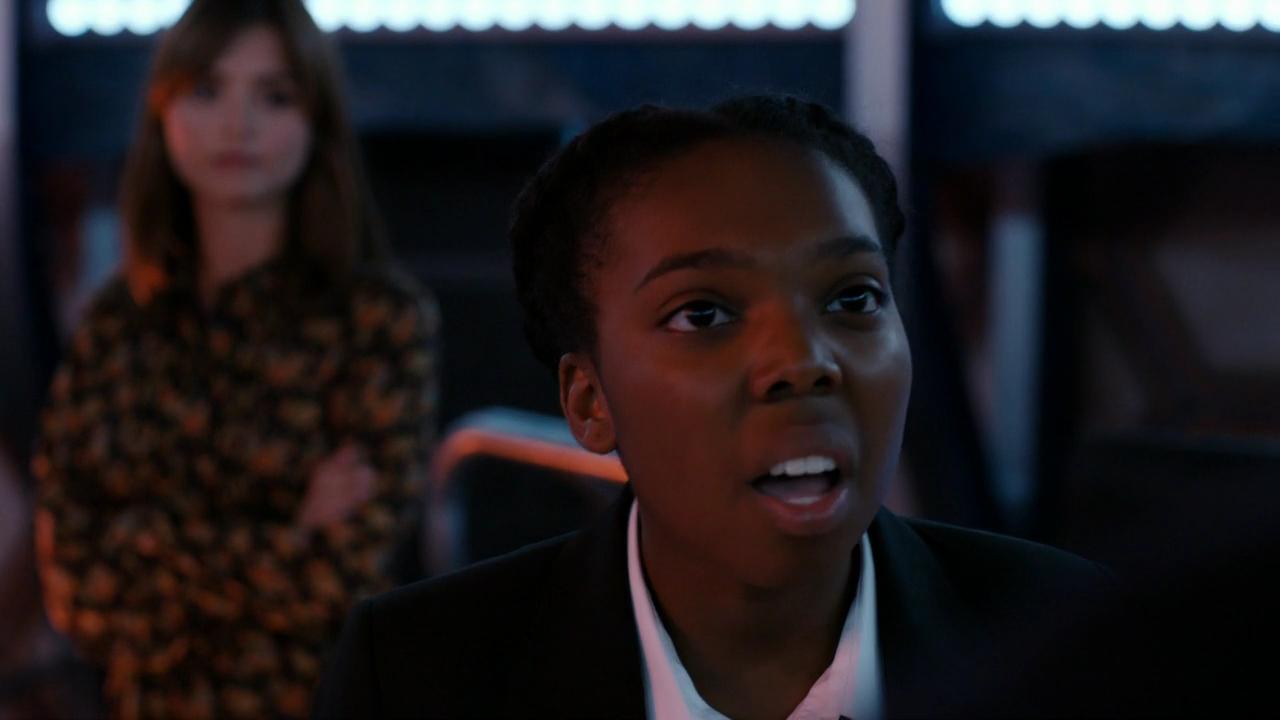Genre Competition (Kill the Moon)
 …and Zygons.
…and Zygons.
First, Kill the Moon. No, wait, first, what do I mean by “genre competition” and why in the world would anything like that matter? So let’s go back and review what’s already been established via TARDIS Eruditorum. Most readers here should be familiar with the term “narrative substitution,” which is what happens when we’re toodling along, all genre-savvy and boned up on TV Tropes, and suddenly the rug is pulled out from under us and the story we think we’re watching turns into something else.
Phil coined the phrase in his review of A Good Man Goes to War, where the “male revenge for his hurt woman” story trope is rejected for something quite different – instead, it turns into a story of Grace, which is delivered not by the Doctor, but by River Song. Or we might look at the “epic season finale” of The Pandorica Opens and how the fulfilled narrative collapse is supplanted by a small, intimate story of one family.
What we get in Kill the Moon is something similar, but it is structurally different, not to mention ramped up to 11. Rather than giving us one story, and then substituting it with something else, Kill the Moon cycles through a variety of genre tropes – especially genre tropes familiar to Doctor Who – and then puts them in competition against each other to see which will prevail. Which ultimately ends up being a statement of values, or perhaps a hierarchy of values, for the genres themselves have certain values implicitly coded into them from the beginning. To top it all off, the story then comments on this.
We should have seen coming from the cold open, which features Clara talking to us through our TV monitors. Of course within the story itself she’s talking to our fictional counterparts on Earth, but for our purposes that doesn’t matter – simply addressing the camera directly suffices in this day and age to imply a metafictional component. And metafiction, we should point out, as is the case with every kind of genre, carries with it certain assumptions and values. Which we’ll get to later. I would like to point out, though, that there’s another layer to this convention within Doctor Who itself, namely that it’s an invocation of the Second Doctor, who was often peering out of television monitors, always on the verge of breaching the veil between fiction and reality.
So let’s go through Kill the Moon’s various genre invocations, and what those imply both in terms of themselves and within Doctor Who.
 After the credits we begin at Coal Hill (love the alchemical implication of the nigredo stage of the Great Work in the name of that school) where Clara talks to the Doctor about Courtney. Courtney, who’s already in the TARDIS, ready to go on an adventure, armed with motion-sickness wristbands and a bottle of disinfectant in case she still gets sick. In these opening moments, then, we have an invocation of Children’s Television.…
After the credits we begin at Coal Hill (love the alchemical implication of the nigredo stage of the Great Work in the name of that school) where Clara talks to the Doctor about Courtney. Courtney, who’s already in the TARDIS, ready to go on an adventure, armed with motion-sickness wristbands and a bottle of disinfectant in case she still gets sick. In these opening moments, then, we have an invocation of Children’s Television.…
